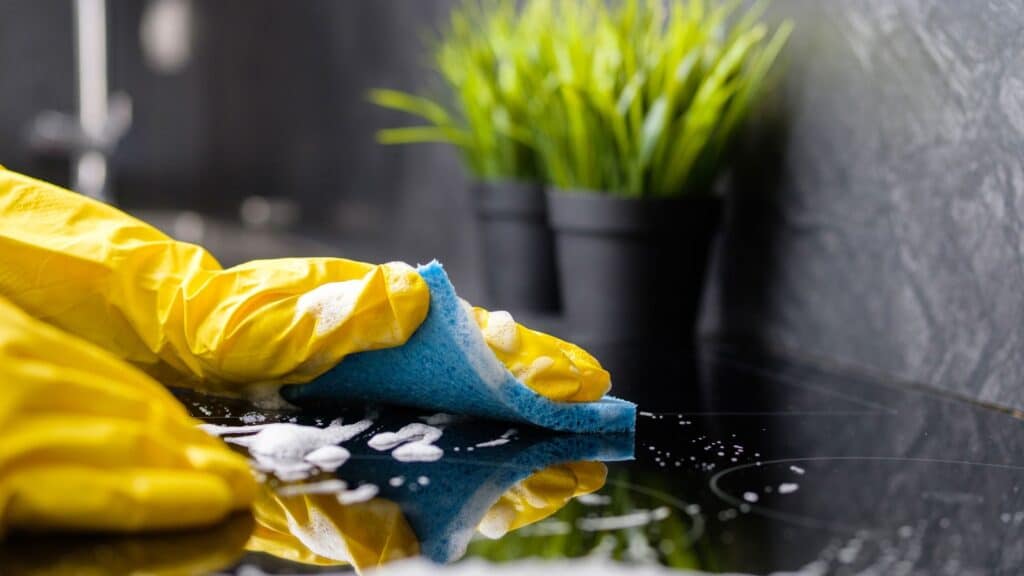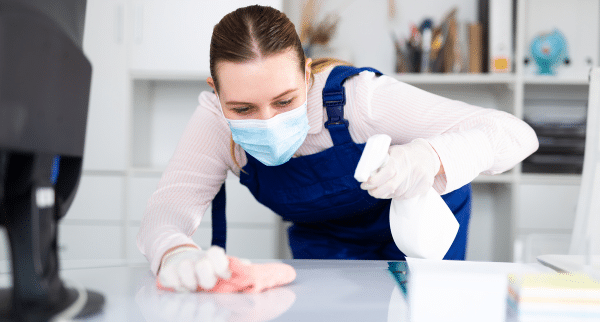What is the Difference between Disinfecting and Sanitation?
In the pursuit of a clean and healthy environment, two pivotal terms take center stage: disinfecting and sanitation. Despite their apparent interchangeability, a closer examination exposes nuanced disparities. As a seasoned expert in the field, I am delighted to navigate through the intricacies of these terms, unraveling their essence and illuminating their unique contributions to our quest for hygiene.
Disinfecting operates as a precision strike against harmful microorganisms, employing targeted measures to eliminate or neutralize pathogens on surfaces. Contrastingly, sanitation adopts a more holistic approach, extending beyond immediate threats to establish an environment conducive to overall health. Together, they form a symbiotic relationship, with disinfecting providing swift, tactical responses, and sanitation orchestrating long-term, preventive measures.
Understanding these distinctions becomes paramount as we confront global health challenges. Disinfecting and sanitation emerge not only as guardians of public health but as strategic investments for businesses, fostering employee well-being and customer satisfaction. As we navigate this nuanced landscape, let us collectively embrace these practices, forging a path toward a world where hygiene prevails and infectious threats are held at bay.

Disinfecting: The Precision Strike
Embarking on our exploration, let’s delve into the intricacies of disinfecting. This process is a meticulously targeted endeavor focused on eliminating or deactivating harmful microorganisms residing on surfaces. Precision is the cornerstone of disinfecting; it involves a calculated strike against bacteria, viruses, and other pathogens posing potential threats to human health.
The arsenal of disinfectants comprises a diverse range of chemical agents meticulously crafted to obliterate microorganisms upon contact. Noteworthy members include bleach, hydrogen peroxide, and alcohol-based solutions, chosen for their exceptional potency and efficiency in annihilating a broad spectrum of pathogens. As these agents unleash their power, they transform surfaces into sanctuaries of cleanliness and safety.
A defining characteristic of disinfecting lies in its immediate impact—a tactical strike against the invisible invaders lurking on surfaces, poised to inflict harm. Whether it’s the doorknob frequently touched or the kitchen countertop, disinfecting ensures that these commonplace surfaces become inhospitable realms for harmful microorganisms. It stands as a vigilant guardian, thwarting potential health risks in the spaces we inhabit daily.
In essence, the process of disinfecting is not merely a routine chore but a strategic maneuver, ensuring that our immediate surroundings remain bastions of health and well-being. Through its precision and immediate efficacy, disinfecting establishes a frontline defense against the unseen adversaries that may compromise our safety.
Pro Tip for Cleaning World Inc: Combine related services to save time and resources; for instance, schedule floor cleaning with window washing or junk removal on the same day for increased efficiency. Visit us at 209 Holt St, Hackensack, NJ 07601.

Sanitation: The Holistic Approach
Now, let’s pivot our focus to sanitation. Unlike disinfecting, sanitation is a broader and more encompassing term. It goes beyond the targeted annihilation of microorganisms and involves creating an environment that is conducive to overall health and well-being.
Sanitation encompasses a multitude of practices aimed at promoting cleanliness and hygiene. This includes not only the elimination of germs but also the prevention of their proliferation. Sanitation involves maintaining cleanliness in our surroundings, practicing good personal hygiene, and implementing measures to prevent the spread of diseases.
Water sanitation, waste management, and food hygiene all fall under the umbrella of sanitation. It’s about creating a wholesome environment that minimizes the risk of infections and fosters a healthy lifestyle. While disinfecting is like a surgical strike, sanitation is the overarching strategy that ensures a sustained, long-term victory against germs and diseases.
The Symbiosis: How Disinfecting and Sanitation Work Together
Now that we understand the individual roles of disinfecting and sanitation, it’s crucial to recognize the symbiotic relationship between the two. Think of them as dynamic dance partners – each playing a unique role but contributing to the overall harmony of a clean and healthy environment.
Disinfecting sets the stage by swiftly eliminating existing threats. It’s the immediate response to a potential outbreak, preventing the spread of diseases in high-risk areas. Hospitals, laboratories, and public spaces heavily rely on disinfecting protocols to maintain a sterile environment and protect individuals from contagious pathogens.
On the other hand, sanitation takes the baton from disinfecting and runs the marathon. It involves continuous, preventive measures that ensure a sustained level of cleanliness. Regular cleaning routines, waste management, and promoting personal hygiene habits are all integral components of sanitation. By maintaining a consistently clean environment, sanitation reduces the likelihood of future outbreaks, creating a fortress against the intrusion of harmful microorganisms.
Persuading the Skeptics: The Importance of Disinfecting and Sanitation
For skeptics who may question the necessity of these meticulous processes, it’s imperative to emphasize the profound impact they have on public health. In a world where global travel is a routine affair, where urbanization is on the rise, and where densely populated areas are breeding grounds for pathogens, the importance of disinfecting and sanitation cannot be overstated.
Disinfecting acts as a rapid response mechanism, preventing the escalation of potential health crises. The recent challenges posed by emerging viruses and pandemics underscore the critical role of disinfecting in controlling the spread of infectious diseases. The efficacy of vaccines and medical treatments can be compromised if the environment is not concurrently disinfected.
Moreover, sanitation is the bedrock upon which public health stands. It is the shield that guards against a multitude of diseases, from the common cold to more severe infections. By adopting a comprehensive approach to sanitation, we reduce the burden on healthcare systems, alleviate the suffering of individuals, and create a society that is resilient against the onslaught of infectious agents.
The Future of Cleanliness: Innovations and Advancements
As we navigate the landscape of disinfecting and sanitation, it’s crucial to acknowledge the ever-evolving nature of these practices. The field is witnessing continuous innovation, with researchers and experts exploring new technologies and methodologies to enhance the effectiveness of our hygiene protocols.
The advent of ultraviolet (UV) light disinfection, for example, showcases the industry’s commitment to finding alternative and sustainable methods. UV light has proven to be highly effective in neutralizing various pathogens, offering a chemical-free and environmentally friendly approach to disinfection.
Similarly, advancements in nanotechnology have paved the way for antimicrobial surfaces that inherently resist the attachment and growth of microorganisms. These surfaces, ranging from door handles to medical equipment, act as passive defenders, continuously inhibiting the spread of germs without the need for frequent disinfection.
The integration of artificial intelligence and data analytics is also transforming the way we approach cleanliness. Smart sanitation systems can monitor public spaces in real-time, detecting potential hygiene risks and enabling swift responses to prevent the escalation of health threats.
Persuading Stakeholders: The Business Case for Hygiene
In the corporate landscape, where stakeholders often need convincing beyond the realm of public health, articulating the business case for hygiene becomes paramount. Disinfecting and sanitation are not merely altruistic endeavors; they are investments in the well-being of employees, customers, and the longevity of the business itself.
Employee productivity is intricately linked to their health and well-being. A clean and hygienic workplace not only reduces absenteeism due to illness but also fosters a positive work environment. Employees are more likely to be motivated and engaged when they feel that their health is a priority.
For businesses in the hospitality and service industries, customer satisfaction is directly tied to the perceived cleanliness of their establishments. From hotels to restaurants, maintaining high standards of hygiene is not just a regulatory requirement but a competitive advantage. Customers are more likely to return to establishments that prioritize their safety and well-being.
The current global landscape, marked by the ongoing challenges of the COVID-19 pandemic, has also underscored the resilience of businesses that prioritize hygiene. Companies that swiftly adapted to enhanced disinfecting and sanitation protocols not only safeguarded their employees and customers but also demonstrated their commitment to societal well-being.
PRO TIP: Cleaning World Inc: Enhance efficiency by bundling services, including commercial cleaning, flood cleanup, and wood floor cleaning.
What is the Difference between Disinfecting and Sanitation?
In essence, the differentiation between disinfecting and sanitation transcends mere semantics; it represents a nuanced comprehension that empowers individuals, businesses, and societies to construct a formidable defense against the imperceptible threats that envelop us.
As a seasoned authority in the field, I issue a compelling call to action. Let us collectively acknowledge the pivotal roles that both disinfecting and sanitation play in sculpting a hygienic future. Through a conscientious embrace of these practices, coupled with an infusion of innovation, we possess the ability to shape a world where the propagation of infectious diseases is curtailed, and the health and well-being of individuals take precedence.
The journey toward a cleaner, safer world commences with an unwavering commitment to understanding. It requires a shared dedication to implementing meticulous disinfecting procedures and fostering comprehensive sanitation practices. This commitment extends across households, businesses, and entire communities, establishing a foundation upon which a resilient defense against health threats can be built.
In this collective effort, we pave the way for a future where hygiene is not just a necessity but a shared responsibility. Through understanding, commitment, and innovation, we chart a course toward a world where health and well-being thrive, and the invisible adversaries that challenge our safety are effectively thwarted.





